SeLECTS stands for Self-Limited Epilepsy with Centrotemporal Spikes. It was formerly known as Benign Rolandic Epilepsy. This is one of the more common types of epilepsy in children. It affects 6-7% of all children who have epilepsy. It affects boys and girls, with boys being slightly more likely to develop it.
Age of onset ranges from 3 ‐ 12 years, but mostly it develops between 4 – 10 years. Children who have this type of epilepsy are typically well, with a normal developmental history, although some may have prior history of specific cognitive issues, reading difficulties, or ADHD. A small number may have a prior history of febrile seizures.
This kind of epilepsy is called ‘benign’ (meaning that it has a good outcome). The centrotemporal, or rolandic, area of the brain, which is responsible for movement, is where the abnormality occurs which causes the epilepsy. It is a focal epilepsy which often affects one side of the face or body.
While there may be a genetic component to SeLECTS, no specific variants have yet been identified. While children with this type of epilepsy are more likely to have close relatives with history of epilepsy, in most cases there is no family history.
SeLECTS was formerly called Benign Rolandic Epilepsy (BRE) and this term is still used by some. It has also been known by the following names:
- Benign childhood epilepsy with centrotemporal spikes (BCECTS)
- Childhood epilepsy with centrotemporal spikes (CECTS)
- Benign Epilepsy with Centro Temporal Spikes (BECTS)
- Benign Rolandic epilepsy pf Childhood (BREC)
- Benign Focal Epilepsy of Childhood (BFEC)
According to the International League Against Epilepsy, self-limiting means there is a high likelihood of seizures remitting by a predictable age and the Epilepsy Diagnosis site describes SeLECTS under the heading of Self-limiting epilepsy in which remission is expected in all cases by adolescence.
Symptoms
Focal seizures will often start as the child is sleeping or during wakening and are typically brief.
In a focal seizure with sensorimotor symptoms the child may experience:
- Numbness, twitching, or tingling on one side of the face or mouth involving the tongue, lips, gum and inner side of the cheek.
- The seizure may also involve the throat which may cause speech to be unclear and difficult to understand. The child may make strange throaty or gurgling noises, which often alerts parents that something may be wrong. The child often is aware and knows what they want to say but cannot speak properly.
- Drooling which may be due to excess saliva or to inability to swallow.
Fewer than 20% of children have seizures while awake only.
Most of the focal seizures begin in sleep with twitching movements (called clonic movements) or a stiffness (called a tonic movement) on one side of the face. These movements may then spread to involve the arm, the leg, or both, usually on the same side as the face, or the upper limbs. The seizure may sometimes progress to both sides of the body. In this way the child then loses consciousness, becomes stiff and has regular, jerking movements of the arms and legs. The child may also pass urine. This is called a focal to bilateral tonic‐clonic seizure. After this seizure the child will be tired and may sleep for a few hours.
Seizures are typically brief 2-3 minutes and tonic clonic status is rare.
Diagnosis
A full and accurate history of the seizure and an EEG (electroencephalogram) test which records the ongoing electrical activity in the brain are needed to make the diagnosis. The EEG will have normal background but may show the spike abnormality in the centrotemporal or rolandic area of the brain which causes SeLECTS. A normal result on the EEG does not mean the child does not have SeLECTS and the doctor may arrange a Sleep deprived EEG as it is more likely that abnormal activity will show up with less sleep. If the EEG and history indicate SeLECTS the doctor may not be consider it necessary to order an MRI.
Treatment
Treatment with anti‐seizure medication may not always be considered necessary since it is likely that the seizures will tend to disappear when or after the child reaches puberty. Many children will only have one or two seizures. The doctor will discuss the question of whether to treat with parents, based on the frequency of seizures, whether daytime seizures are present, the seizure type and the risks of injury or Sudden Unexpected Death in Epilepsy. If the child has tonic-clonic seizures it is more likely that treatment will be prescribed.
Anti-seizure medications (ASM’s) are usually successful in controlling seizures in SeLECTS. Medications such as levetiracetam, carbamazepine, oxcarbazepine, zonisamide and gabapentin are among those used in treatment.
Prognosis
The fact that this type of epilepsy is called benign means that it has a very good outcome. Nearly all children with this type of epilepsy will outgrow the tendency to have seizures by their mid-teens. Seizures usually stop after 2-4 years of starting and medication may be withdrawn under the guidance of the treating doctor.
Children who have SeLECTS are typically well and without developmental difficulties. They do not usually have long term learning difficulties, but some can have some transient speech deficits, behavioural disorders or underperformance in school during the active phase, and this usually resolves when child has outgrown the epilepsy.
Further Information
- Further information on Anti-Seizure Medications can be found by visiting the 'Treatment' section of our website.
- Further information on diagnosis can be found by visiting the 'Diagnosis' section of our website.
- Other useful resources surrounding epilepsy can be found throughout our 'Epilepsy Information' section.
- If you need any information or support regarding epilepsy, contact your local Community Resource Officer - you can find their details by visiting the 'Our Local Service' section of our website.
